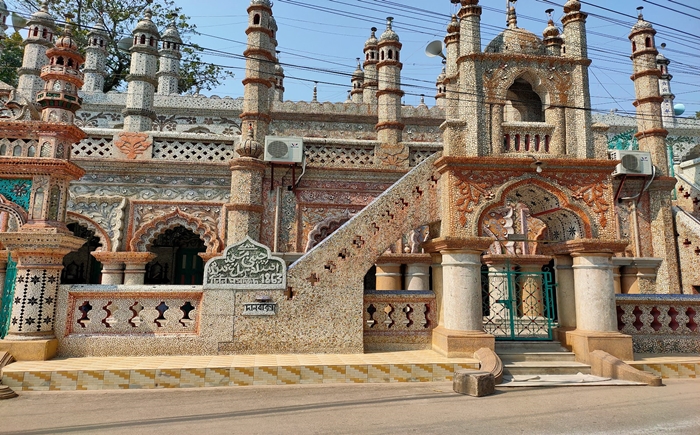
The Chini Mosque was built during the reign of the Mughal Emperor Shah Jahan in the 17th century, in the remote town of Syedpur, about 20km from Nilphamari. It was commissioned by Hakim Ilmuddin Ansari, a prominent physician and the royal physician at the Mughal court. The mosque's construction was part of a larger project initiated by Hakim Ilmuddin Ansari, which included a public bathhouse, a market, and a square.
Based on reports, Haji Baker Ali and Haji Muku set up the mosque in the Islambagh region of Syedpur with cane and bamboo in 1883. The mosque was later rebuilt with wave pattern tin by locals. Haji Hafiz Abdul Karim, a businessperson, took the initiative to pave the mosque's initial phase in 1920. Subsequently, hundreds of expert artisans and craftsmen worked together to develop the historic mosque, which was created by Md. Mokhtul and Nabi Baksha.
Popular wall coverings include the ones with vases, flower bushes, roses, moons, and stars all over the walls. There are 243 Shankar marble stones in the mosque that were shipped from Kolkata. In addition, over 25 tons of porcelain fragments were scattered with stones across the mosque. Locals say that 25 metric tons of porcelain were provided by a gas factory in Bogura to decorate it. Many people mistakenly also believe that the mosque was built by the Chinese. However, the term is derived from the Bangla word "Chini" or sugar because of its faultless installation, which resembles sugar grains.
The Chini Mosque exemplifies the finest examples of Mughal architecture. It features the distinctive red brickwork and intricate tile mosaic work that are characteristic of Mughal structures.
The mosque is renowned for its stunning tilework, known as "Kashi-Kari" or "Kashi tiles." These tiles are adorned with vibrant blue, green, and white patterns, including floral motifs and calligraphy from the Quranic verses.This ancient mosque is adorned with four towering minarets, each crowned with a small, elegant dome. These minarets not only add to the aesthetic appeal but also serve as functional elements of the mosque's architecture.
It has a spacious courtyard surrounded by a gallery and an impressive prayer hall. The hall is intricately decorated with tilework and features a central Mehrab (prayer niche).The Chini Mosque is renowned for its meticulous architectural proportions and symmetrical design, which are hallmarks of Mughal architecture.
The mosque serves as a place of worship for the local Muslim community and stands as a symbol of Islamic faith and culture in Lahore. It is a popular tourist attraction, drawing visitors from around the world who come to admire its architectural beauty and historical significance.
The mosque is part of Lahore's historic walled city, which is a designated UNESCO World Heritage Site. Chini Mosque stands as a remarkable testament to the artistic and architectural achievements, continuing to captivate visitors with its timeless beauty and historical significance.
How to go & Where to stay:
As Syedpur is a railway city, taking the train to Chini mosque is a sensible decision.
Every weekday at 8:15 a.m., the Nilsagar Express train departs Dhaka for Syedpur, arriving at 4:45 p.m. The mosque is only two kilometers from the train station.
Buses run at regular intervals from the capital's Gabtali, Uttara, and Kalyanpur to Syedpur.
Direct flights to Syedpur are also available from Biman Bangladesh Airlines, NovoAir, and US Bangla, who run 10 to 12 flights each day on that route.
For staying you can choose any hotel in Syedpur.

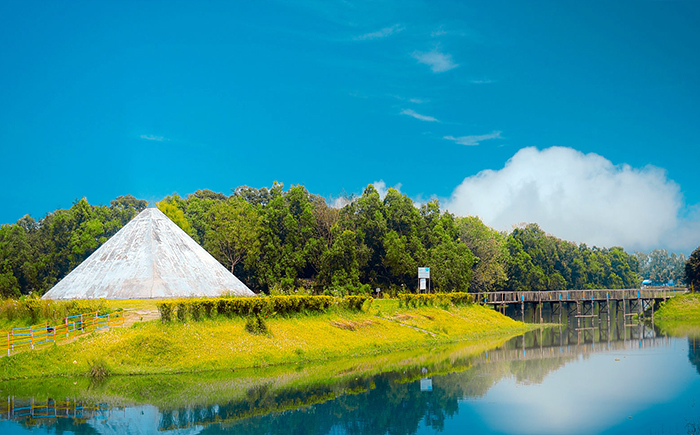

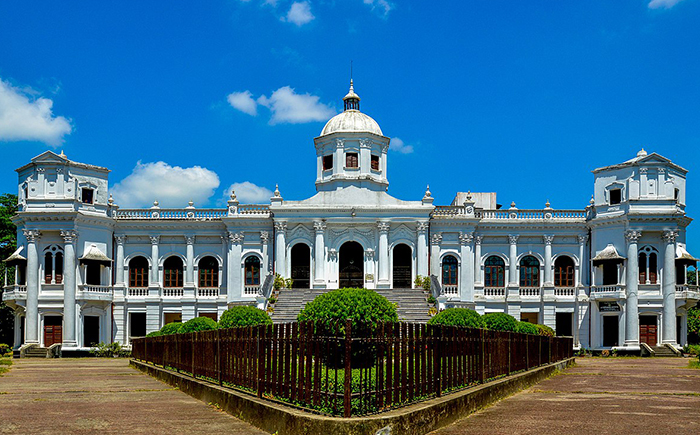
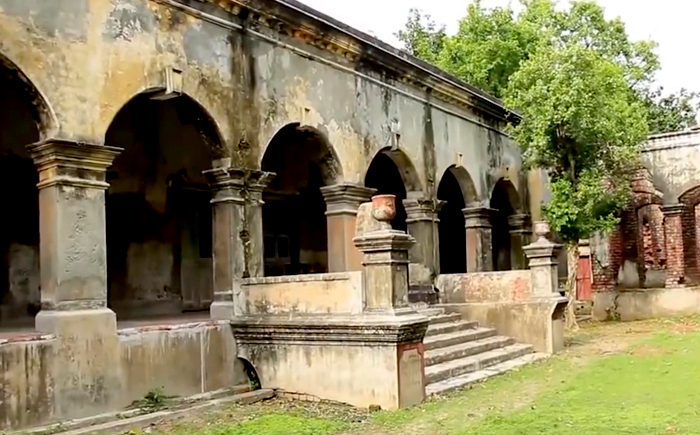
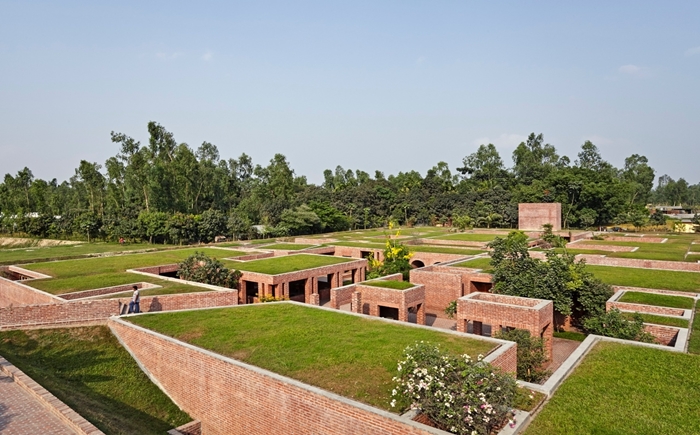



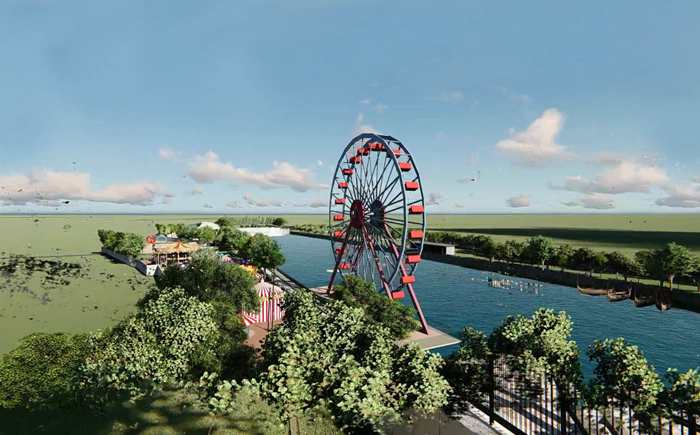


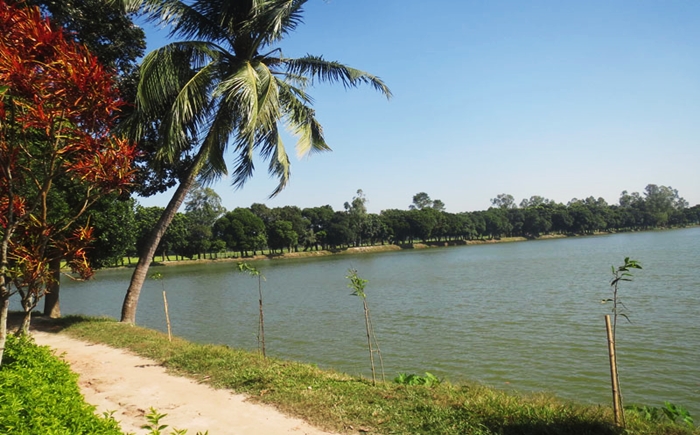
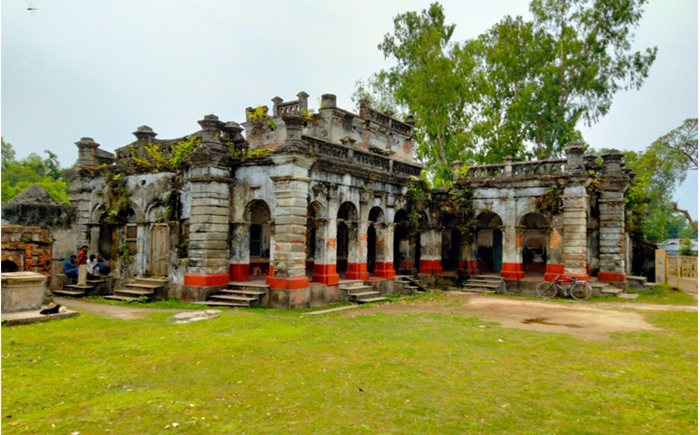
Leave your valuable comments: